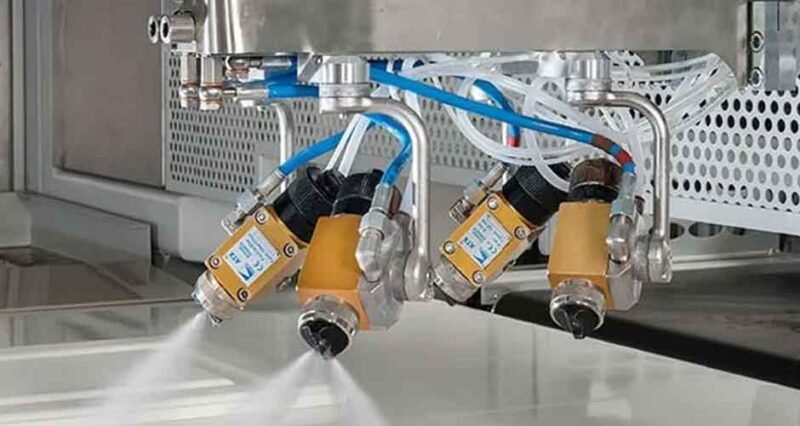
Within industrial manufacturing, various materials are utilized to protect components against corrosion and erosion. One common example is thermal barrier coatings applied to gas turbines to extend their lifespan and efficiency.
Spray coating machines are among the most efficient ways of applying protective layers, and one of their many uses includes applying thin liquid solutions through to thick suspensions and slurries. Utilizing a precision metering pump, the process uses a spray gun with precise application capabilities to evenly and thickly coat surfaces with material.
Ultrasonic nozzles on these systems are equipped with vibratory characteristics that produce an intense ruffling action when coating fluid is sprayed, leading to fine mist drops from the nozzle when coating is sprayed onto an area, eliminating unnecessary dispersion or material loss. Furthermore, an adjustable atomization system enables users to achieve specific film thickness requirements depending on the application requirements.
An alternative method used by liquid spray systems involves compressing air to propel coating fluid through the nozzle and onto the substrate surface, but this does not produce uniform coatings due to compression air carrying some away from its target, leaving uneven distribution and material loss. However, ultrasound atomization offers the best of both worlds by providing superior transfer efficiency as well as precision uniform coatings.
Cold gas dynamic spray (CGD) technology is another form of spray technology used for depositing metallic coatings on surfaces, using both gaseous and solid particles in tandem to do this. CGD offers fast application times while depositing pure and alloy metals as well as composites such as polyamide.
CGD coating processes are similar to spin coating techniques, yet contain some unique differences. Preheating powders before deformability increases allows more consistent coatings while decreasing waste (Ref 67). Furthermore, CGD’s ability to use low oxidation metal powders allows for reduced overall costs of operation.

